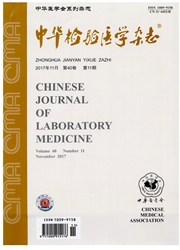

 中文摘要:
中文摘要:
定期检查血脂是动脉粥样硬化性心血管疾病(ASCVD)防控和危险评估的重要措施。国内外诸多血脂异常管理指南均强调以降低低密度脂蛋白胆固醇(LDL-C)水平作为防控ASCVD危险的首要干预靶标。近年来研究显示,小而密低密度脂蛋白(sdLDL)和sdLDL胆固醇(sdLDL-C)水平作为预测和评估ASCVD危险的指标比LDL-C更为敏感。sdLDL和sdLDL-C的分离检测方法从传统的超速离心法、凝胶电泳法等逐渐向高效、快速、准确的全自动化检测系统发展。LDL亚组分分析技术的不断改进与推广为其在ASCVD防控和危险评估方面的临床应用提供了新的方法与思路。
 英文摘要:
英文摘要:
Regular checking blood lipids may be served as the important approach for the risk assessment and prevention of the atherosclerotic cardiovascular disease (ASCVD). It has been emphasized by several dyslipidemia management guidelines that the low density lipoprotein cholesterol (LDL-C) was the primary intervention target for prevention of ASCVD risk. Recent studies have demonstrated that small dense low density lipoprotein (sdLDL) or sdLDL cholesterol (sdLDL-C) levels as the biomarker for the prediction and risk assessment of ASCVD may be more sensitive than LDL-C. The isolation and detection methods of sdLDL or sdLDL-C were developed from the traditional ultracentrifugation or gel electrophoresis to the efficient, fast, accurate automated processing system. The continuous advances and popularization in analytical techniques of LDL subcomponents provided new methods and ideas for their application in the risk assessment and prevention of ASCVD.
 同期刊论文项目
同期刊论文项目
 同项目期刊论文
同项目期刊论文
 期刊信息
期刊信息
